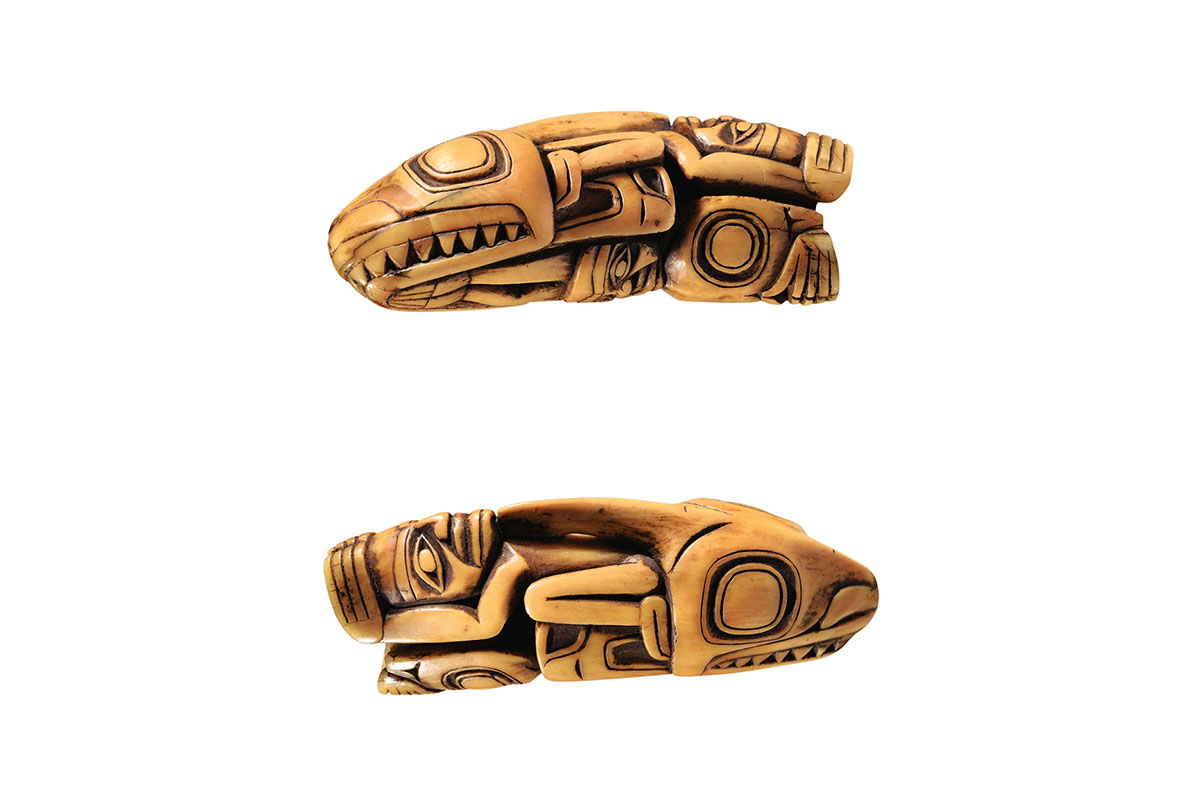Amulet
Southeast Alaska
ca. 1840
marine mammal ivory
width: 3 ¾"
Inventory # N4372
Please contact the gallery for more information.
PROVENANCE
European private collection, acquired c. 1970
RELATED EXAMPLES
American Museum of Natural History, New York, Cat. Nos. 19/457 and 19/477 for two amulets collected by George T. Emmons between 1882-1887 – See: Wardwell, Allen. Tangible Visions: Northwest Coast Indian Shamanism and its Art. New York: The Monacelli Press, 1996, pg. 169, pls. 196 and 197
Private collection, Ibid, pg. 169, pl. 198
Denver Art Museum, Cat No. 1953.570, formerly in the collection of The Peabody Museum of Archeology and Ethnology, Cambridge, collected by Captain Edward G. Fast at Sitka Alaska in 1867-68 – See: Ibid, pg. 170, pl. 199
Many, perhaps most, ivory and bone amulets were used by and sometimes made by shamans, usually as part of a necklace or attached to a garment. Ivory amulets are also known to have been attached to moosehide-armor tunics. The carving here is deep and precise, truly the work of a master artist and design composer. This one shows no piercing or other means to attach or suspend it, and was possibly owned by a high-ranking clan or house member and used as a personal talisman carried in a moose or deerhide pouch.
The overall image is an orca whale, indicated by the long dorsal fin extending back from the head. Two humanoid spirit figures are interwoven with the whale image in a compositional style that the late Haida artist Bill Reid sometimes referred to as ‘punning’, where multiple creatures are seen to occupy the same space. The small face on the bottom of the amulet, between the whale’s pectoral fins and just above the large round ovoids of the tail, is the owner of the pair of legs beneath the whale’s lower jaw, and the humanoid hands that appear between the flukes of the tail. The larger spirit-figure face or head, just below the tip of the whale’s dorsal fin in the above photo, is associated with the humanoid arms and hands that surround the face and the reversely oriented legs and feet that overlay the whale’s pectoral fins. The three images have been compacted together to fit closely within the confines of the whale tooth.
Design formlines are few, showing only in the head, pectoral fins and tail, and are done in an early archaic style. Formlines are broad in relation to the negative or carved-out spaces around inner ovoids and within U-shapes. No design elements usually classed as secondary are present. All the incised cuts and hollows have developed a dark patina through the approximately two centuries since the amulet was created, producing a beautiful contrast between the dark and polished ivory surfaces.
Steven C. Brown

